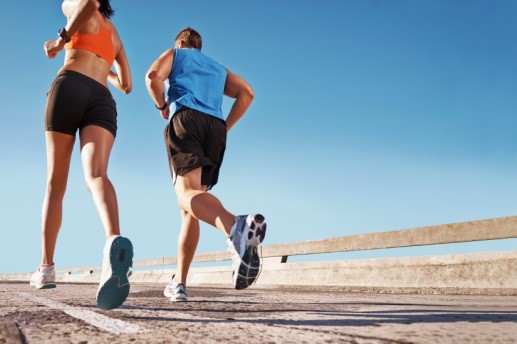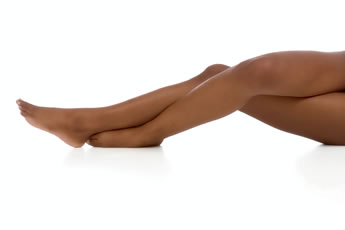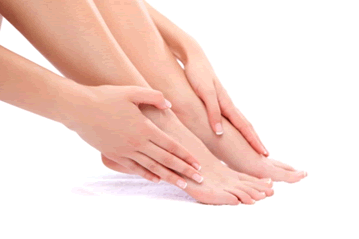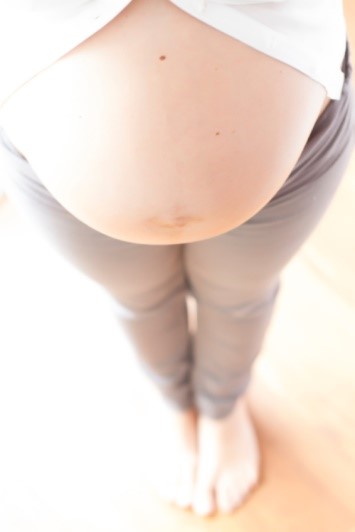Blog
Can Your Feet Size Affect Your Running Efficiency?
 The weight and size of your feet may play a factor in affecting your running efficiency. According to a 2004 overview published by pubmed.gov, extra weight on your feet can decrease your efficiency by up to about 10 percent, whereas weight on your body reduces efficiency by about 1 percent. Those who have larger feet do not seem to lose as much efficiency. Rodger Kram, a University of Colorado at Boulder professor of integrative physiology, says that the average man’s foot weighs about 2.2 pounds, and every 3.5 ounces may probably result in about a 1 percent loss in running efficiency.
The weight and size of your feet may play a factor in affecting your running efficiency. According to a 2004 overview published by pubmed.gov, extra weight on your feet can decrease your efficiency by up to about 10 percent, whereas weight on your body reduces efficiency by about 1 percent. Those who have larger feet do not seem to lose as much efficiency. Rodger Kram, a University of Colorado at Boulder professor of integrative physiology, says that the average man’s foot weighs about 2.2 pounds, and every 3.5 ounces may probably result in about a 1 percent loss in running efficiency.
Proper foot care is important for biomechanics of the feet, which incorporate the parts that manage the movement of your feet. For more information about treatment, consult with Dr. Michael E. Newman of Pennsylvania. Our doctor will attend to all of your podiatric needs.
A History of Biomechanics
- Biomechanics dates back to the BC era in Egypt where evidence of professional foot care has been recorded.
- In 1974 biomechanics gained a higher profile from the studies of Merton Root, who claimed that by changing or controlling the forces between the ankle and the foot, corrections or conditions could be implemented to gain strength and coordination to the area.
Modern technology improvements are based on past theories and therapeutic processes providing a better understanding of podiatry concepts for biomechanics. Computers provide accurate determinations about the forces, moments and patterns of the foot and lower legs with the most important information captured.
Advances in materials and more awareness of biomechanics have developed enhanced corrective methods, offering further options for foot-related injuries. Understanding foot biomechanics can help improve and eliminate pain, stopping further stress to the foot.
If you have any questions please feel free to contact our offices located in Plymouth Meeting and Ambler, PA. We offer the newest diagnostic tools and technology to treat your foot and ankle needs.
Corns and Callouses
 Corns and calluses often occur as the skin attempts to protect itself from excessive pressure or friction on the skin. Corns are typically smaller and include an inflamed portion of skin, making them considerably more painful. While corns can be treated at home most of the time, it is always best to seek professional attention, especially if diabetic. Wearing proper fitting shoes and socks can help reduce and prevent corns.
Corns and calluses often occur as the skin attempts to protect itself from excessive pressure or friction on the skin. Corns are typically smaller and include an inflamed portion of skin, making them considerably more painful. While corns can be treated at home most of the time, it is always best to seek professional attention, especially if diabetic. Wearing proper fitting shoes and socks can help reduce and prevent corns.
Corns can be a nuisance for your foot health. For more information about treatment, consult with Dr. Michael E. Newman of Pennsylvania. Our doctor will attend to all of your podiatric needs.
Corns: What are they? And how do you get rid of them?
Corns can be described as areas of the skin that have thickened to the point of becoming painful or irritating. They are often layers and layers of the skin that have become dry and rough, and are normally smaller than calluses.
Ways to Prevent Corns
There are many ways to get rid of painful corns such as wearing:
- Well-fitting socks
- Comfortable shoes that are not tight around your foot
- Shoes that offer support
Treating Corns
Treatment of corns involves removing the dead skin that has built up in the specific area of the foot. Salicylic acid can help in getting rid of these corns because it dissolves keratin, which is the protein that makes up a good majority of corns. Podiatrists recommend that people with diabetes not use salicylic acid but should consult with their podiatrist regarding the treatment of corns.
If you have any questions please feel free to contact our offices located in Plymouth Meeting and Ambler, PA. We offer the newest diagnostic tools and technology to treat your foot and ankle needs.
Cold Plasma Developed by University Can Freeze Toenail Fungus
 A new form of cold air plasma developed by researchers at the University of California, Berkeley, can now reportedly freeze out toenail fungus. Cold plasmas can kill bacteria, remove dental plaque, loosen the connections between tissue cells, help coagulate blood and reduce bleeding. Using e. coli, researchers discovered a significant reduction in e. coli populations following the application of cold plasma; Device Farm also reported success in killing the specific fungi responsible for fungal infections. FDA approval is still required before the company can test on human patients.
A new form of cold air plasma developed by researchers at the University of California, Berkeley, can now reportedly freeze out toenail fungus. Cold plasmas can kill bacteria, remove dental plaque, loosen the connections between tissue cells, help coagulate blood and reduce bleeding. Using e. coli, researchers discovered a significant reduction in e. coli populations following the application of cold plasma; Device Farm also reported success in killing the specific fungi responsible for fungal infections. FDA approval is still required before the company can test on human patients.
While toenail fungus is troublesome to eradicate, it is not impossible. For more information about treatment, consult with Dr. Michael E. Newman of Pennsylvania. Our doctor will attend to all of your podiatric needs.
Toenail Fungus Treatment
Toenail fungus is a problem which affects many people and is hard to get rid of. Fortunately, there are several methods to go about treating toenail fungus.
Antibiotics & Treatments
Lamisil – is the most commonly effective treatment for toenail fungus. It is available as an antibiotic Terbinafine tablet and cream. Terbinafine is a chemical component which kills fungal growth on the body. Applying regular doses will gradually kill the fungal growth. It is important to keep the area clean and air free.
Talcum powder – applying powder on the feet and shoes helps keep the feet free of moisture and sweat.
Sandals or open toed shoes – wearing these will allow air movement and help keep feet dry. They also expose your feet to light, which fungus cannot tolerate. Socks with moisture wicking material also help as well
Alternative Treatments
There are always surgical procedures that are available for toenail fungus. Some people would like immediate quick removal of toenail fungus. Surgeons will be able to cut through and remove the growth using laser surgery. It is important not to try and remove it yourself. Once removed, your old shoes will need to be replaced to avoid reinfection.
If you have any questions please feel free to contact our offices located in Plymouth Meeting and Ambler, PA. We offer the newest diagnostic tools and technology to treat your foot and ankle needs.
Common Foot Changes to Women During Pregnancy
 Foot changes during pregnancy are very common, but some women do not understand why such changes occur. Size increase, arch flattening, and instability in the feet or ankles are all a result of weight gain and hormonal shifts. Normal pregnancy weight gain can change the way a woman walks, leading to instability, and fluid build-up in the lower extremities can cause the feet to grow in size. To manage these changes, compression stockings, regular walking and low-impact exercises can be used effectively.
Foot changes during pregnancy are very common, but some women do not understand why such changes occur. Size increase, arch flattening, and instability in the feet or ankles are all a result of weight gain and hormonal shifts. Normal pregnancy weight gain can change the way a woman walks, leading to instability, and fluid build-up in the lower extremities can cause the feet to grow in size. To manage these changes, compression stockings, regular walking and low-impact exercises can be used effectively.
Pregnant women are susceptible to aching and swollen feet and should be treated with care. For more information about other cures for swollen feet during pregnancy, speak to Dr. Michael E. Newman of Pennsylvania. Our doctorwill assist you with all of your foot and ankle concerns and answer any of your related questions.
What foot problems can arise during pregnancy?
One problem that can occur is over-pronation, which occurs when the arch of the foot flattens and tends to roll inward. This can cause pain and discomfort in your heels while you’re walking or even just standing up, trying to support your baby.
Another problem is edema, or swelling in the extremities. This often affects the feet during pregnancy, but tends to occur in the later stages.
How can I keep my feet healthy during pregnancy?
- Wearing orthotics can provide extra support for the feet and help distribute weight evenly
- Minimize the amount of time spent walking barefoot
- Wear shoes with good arch support
- Wear shoes that allow for good circulation to the feet
- Elevate feet if you experience swelling
- Massage your feet
- Get regular, light exercise, such as walking, to promote blood circulation to the feet
If you have any questions please contact our offices located in Plymouth Meeting and Ambler, PA. We offer the newest diagnostic and treatment technologies for all your foot and ankle needs.
